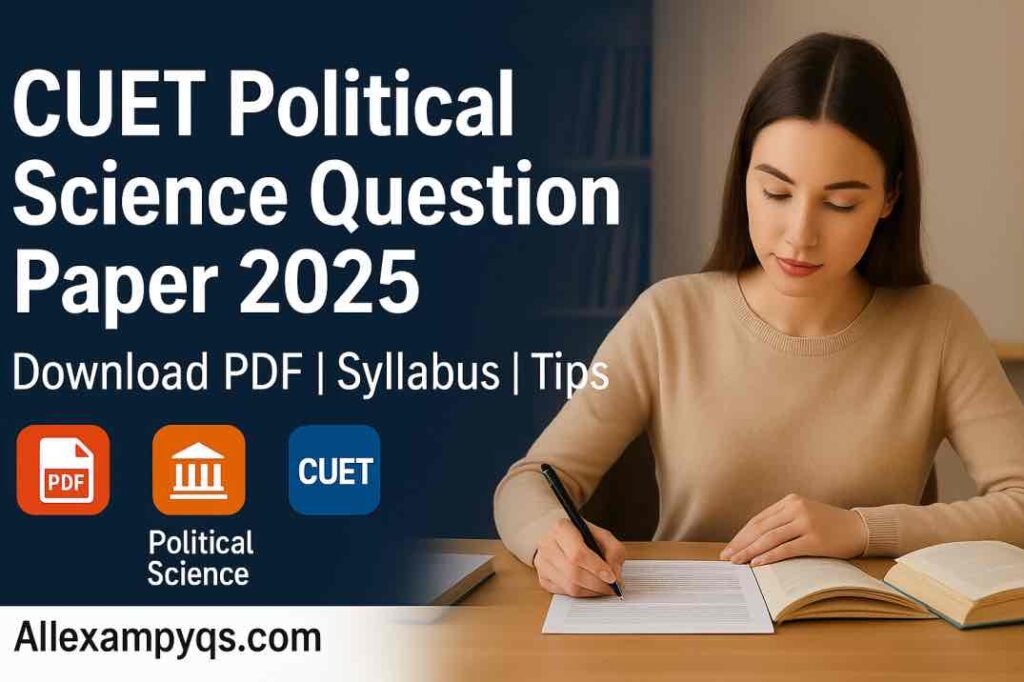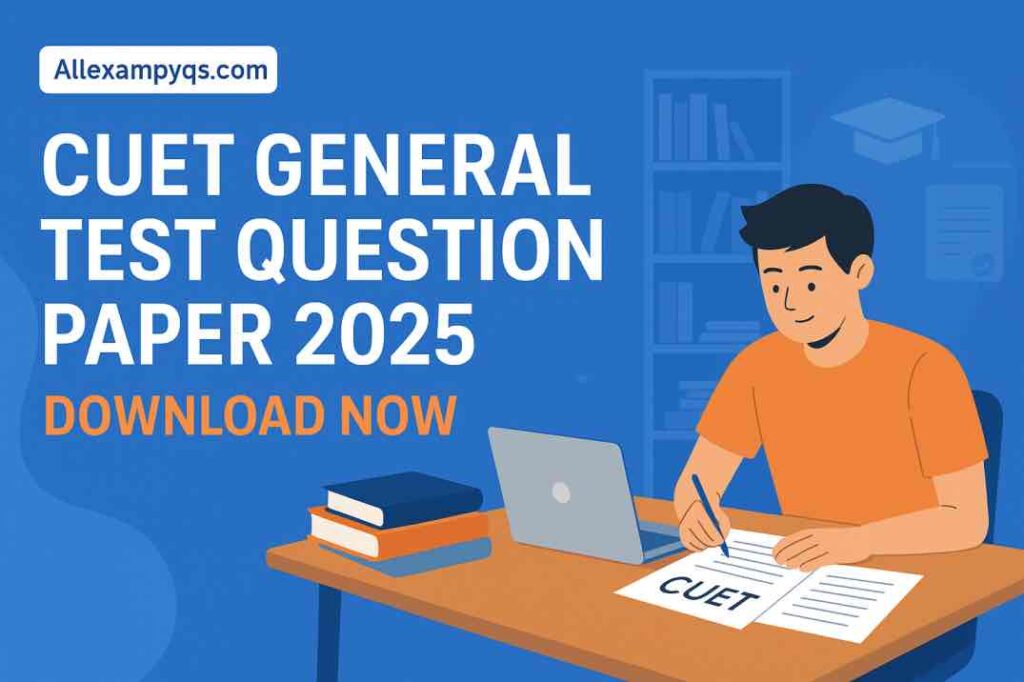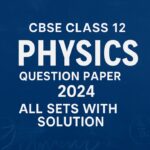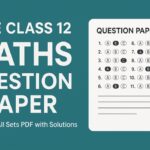📅 Published on: 13.10.2025
Table of Contents
ToggleMoving Charges and Magnetism Class 12 Notes – Download PDF

The chapter “Moving Charges and Magnetism” is one of the most essential and fascinating topics in Class 12 Physics. Here you may download high quality moving charge and magnetism class 12 notes. It introduces students to the relationship between electric current and magnetic fields — a concept that laid the foundation for the modern world of electromagnetism and electric machines. This chapter explains how moving electric charges produce magnetic fields, how these fields interact with other charges, and how forces act on current-carrying conductors.
In the CBSE Class 12 Physics syllabus, this chapter holds significant importance not only for board exams but also for competitive exams like JEE Main, NEET, and other engineering or medical entrance exams. Understanding this chapter helps students build strong conceptual clarity on electromagnetism, which is crucial for advanced topics like Electromagnetic Induction and Alternating Current.
If you are preparing for Class 12 or upcoming entrance exams, having well-organized Moving Charges and Magnetism Notes can make your preparation smoother and more effective.
Download Moving Charges and Magnetism Class 12 Notes (PDF)
Students can easily download Moving Charges and Magnetism Class 12 Notes in PDF format for free from trusted educational sources such as pyqscentre.com. The PDF contains all important concepts, derivations, formulas, and solved examples.
Chapter Name | Download Link (PDF) |
Moving Charges and Magnetism Class 12 Notes |
Notes and Question paper
Features of Moving Charges and Magnetism Class 12 Notes
The Moving Charges and Magnetism Class 12 Notes are designed according to the latest NCERT and CBSE syllabus. These notes simplify complex concepts into clear, easy-to-understand points so students can revise quickly before exams. Below are some key features of these notes:
Comprehensive Coverage:
All topics from the NCERT textbook are covered in detail, including definitions, formulas, derivations, and applications.
Concept-Based Explanation:
Each concept is explained step-by-step with real-life examples, helping students connect theoretical physics with practical understanding.
Formula Summary Table:
Important formulas like the Biot–Savart Law, Lorentz Force, and Ampere’s Law are highlighted separately for quick reference during revision.
Derivations Simplified:
Notes include detailed derivations of key formulas such as the force on a moving charge in a magnetic field and the magnetic field on the axis of a circular coil.
Visual Aids and Diagrams:
Well-labeled diagrams make it easy to visualize field lines, forces, and motion of charged particles under magnetic fields.
Exam-Oriented Structure:
Questions commonly asked in CBSE Board exams and previous year JEE/NEET papers are marked for focused practice.
Short Notes for Revision:
At the end of each section, quick revision notes are provided so students can brush up on concepts within minutes before the exam.
Important Topics in Moving Charges and Magnetism Class 12
The chapter consists of a variety of concepts ranging from simple definitions to complex mathematical derivations. Below are the most important topics you should study thoroughly:
1. Magnetic Force on a Moving Charge
- Lorentz Force:
- Direction of force using the Right-Hand Rule.
- Motion of a charged particle in a uniform magnetic field (circular motion).
2. Magnetic Force on a Current-Carrying Conductor
- Derivation of force
- Torque on a current loop and its application in moving coil galvanometers.
3. Biot–Savart Law
- Relation between current element and magnetic field at a point.
- Applications of Biot–Savart Law to find magnetic field on the axis of a circular coil.
4. Ampere’s Circuital Law
- Statement and mathematical form
- Application to long straight wire, solenoid, and toroid.
5. Motion in Combined Electric and Magnetic Fields
- Velocity selector:
- Cyclotron and its working principle for accelerating charged particles.
6. Magnetic Field Due to Current in Straight Wire and Loop
- Magnetic field at a point due to an infinitely long current-carrying wire.
- Magnetic field along the axis of a circular loop and solenoid.
7. Torque and Magnetic Moment
- Magnetic dipole moment: M = N I A.
- Torque on a current loop in a uniform magnetic field:
8. Moving Coil Galvanometer
- Construction, working, and conversion into an ammeter or voltmeter.
- Sensitivity and reduction of errors in measurements.
These topics frequently appear in CBSE Board exams and JEE/NEET question papers, making them vital for scoring high marks.
How to Prepare Chapter Moving Charges and Magnetism
Preparing for this chapter requires a balanced mix of conceptual clarity, regular problem practice, and smart revision. Here’s a step-by-step guide:
1. Start with NCERT
The NCERT Physics textbook provides the most authentic explanation of each concept. Read it thoroughly line-by-line, especially the derivations and examples.
2. Understand the Physical Meaning
Do not memorize formulas blindly. Understand what each term represents — for example, how magnetic force depends on charge, velocity, and magnetic field direction.
3. Practice Derivations
Write all important derivations at least 3–4 times. Questions like “derive the expression for the magnetic field due to a solenoid” are very common in board exams.
4. Use Diagrams
Draw clean, labeled diagrams in your notes. Diagrams like magnetic field lines of a circular coil, or the construction of a cyclotron, fetch additional marks in exams.
5. Revise Formulas Daily
Keep a formula notebook separately and revise it regularly. Many MCQs in JEE and NEET are purely formula-based.
6. Solve PYQs and Sample Papers
Attempt previous year question papers and sample papers regularly. It helps you understand question patterns and improve time management.
7. Use Interactive Resources
Watch video lectures or animations to visualize how magnetic fields act on moving charges. Visual learning strengthens conceptual understanding.
8. Mock Tests and Self-Evaluation
Attempt chapter-wise mock tests and analyze mistakes. Focus more on topics where you make frequent calculation or concept errors.
By following these strategies consistently, you can master this chapter with confidence.
Conclusion
The chapter Moving Charges and Magnetism not only helps students understand the fascinating link between electricity and magnetism but also forms the base for future topics like Electromagnetic Induction and Alternating Current.
With the help of well-prepared Class 12 Physics Notes, you can quickly grasp core concepts, memorize key formulas, and revise efficiently before exams. The combination of theory, derivations, and numerical practice ensures a complete preparation for board as well as competitive exams.
So, download the Moving Charges and Magnetism Class 12 Notes PDF today and boost your preparation for upcoming exams







